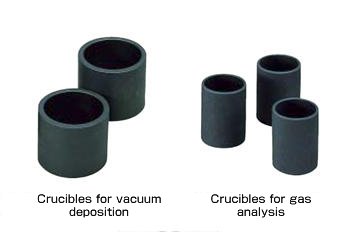Like pencil lead, charcoal, printer ink, etc., carbon materials are very familiar. When such carbon materials are structurally seen, diamonds structured to its name, lamellarly structured graphites, amorphous carbon sumi, and so on are available. Graphites in particular are ultimate conductive materials offering good corrosion resistance, electrical conductivity, thermal resistance, and slidability that cannot be expected from metals. Their uses are limitless, such as space aeronautics, electronics, semiconductors, and nuclear power.
| Type | Characteristic value & uses | Uses |
|---|---|---|
| Natural graphites | - Although they are low-priced, many impurities are contained, the electrical resistance is high. | Pencil lead, mechanical pencil lead |
| Synthetic graphites | - Isotropic graphite Crystalline structure having isotropy under high temperature treatment of approximately 3000°C - Friction material, sliding material - Graphic sheet - C/C composite Heat-resistant composite material of carbon fiber and carbon matrix |
- Crucibles, heaters, negative-electrode materials of lithium-ion batteries, electrode materials, fuel cell separators - Train cars, industrial machine clutches, brakes, etc. - Gaskets, packings - Silicon semiconductors, compound semiconductors, optical fiber manufacturing furnaces |

Graphite crucibles from Toyo Tanso’s catalog
Types of plating